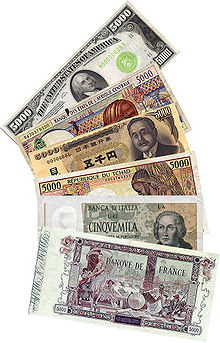Suffolk Bank
[1] The bank was issued its corporate charter on February 10, 1818 by the 38th Massachusetts General Court to a group of the Boston Associates (including Patrick Tracy Jackson and Daniel Pinckney Parker), and the charter's holders and bank's directors met periodically from February 27 to March 19 at the Boston Exchange Coffee House to discuss the organization of the bank.
In addition to Jackson and Parker, other prominent shareholders of the bank included William Appleton, Nathan Appleton, Timothy Bigelow, John Brooks, Gardiner Greene, Henry Hubbard, Augustine Heard, Amos Lawrence, Abbott Lawrence, Luther Lawrence, William Prescott, Dudley Leavitt Pickman, and Benjamin Seaver.
This practice caused many people to doubt the exact worth of certain notes and in turn have little faith in some banks.
In just a single year the Suffolk System had given these seven Boston banks a uniform currency.
The Suffolk System was the predecessor to modern banking practices and led to the creation of the Federal Reserve that still operates today.
After the system became in place, the role of counterfeiting in the New England area fell dramatically.
The Panic of 1837, a deflationary backlash inducing depression and unemployment, was caused by many different factors including the practices of the Second Bank of the United States and political failures.
These practices included, lending reserves to other banks and keeping the payment system operating.
[10] Although the Suffolk System was a great regulator of unsound banking practices, it lacked the ability to properly administer the total volume of banknote circulation.
The Suffolk System's many good qualities could no longer outweigh the lack of their ability to increase note circulation.
"[16] John Jay Knox Jr., a former Comptroller of the U.S. Treasury, stated that the success of the Suffolk Bank demonstrated that:


